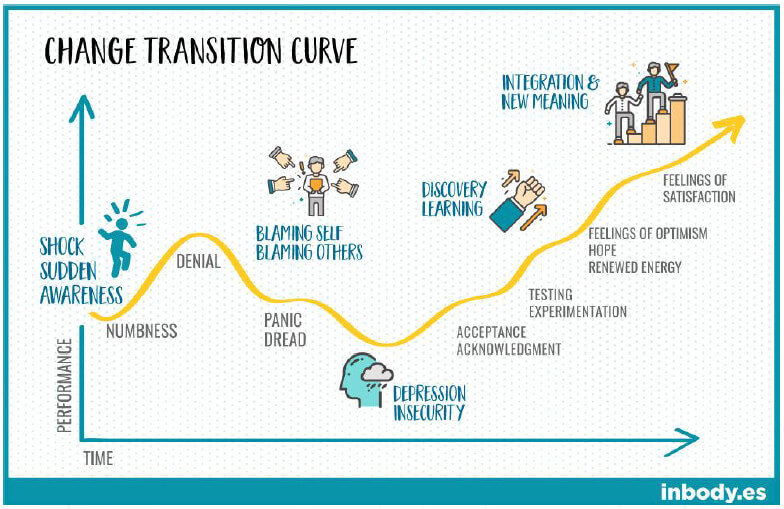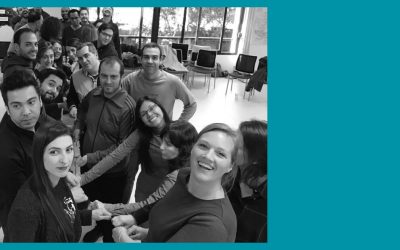How to Allow Business Transformation from Within
GROWTH: this is the one thing businesses and human beings have in common. Or, to be more precise, transformation. Human transformation happens as our cells renew, die and grow ever so often. Business transformation happens as projects die or are re-invented.
It’s a natural circle of life: in nature and in organizations.
As natural as it is, we don’t like change!
Some of us are used to our comfort zone and believe habits and rhythms provide immense value, regarding efficiency.
In fact, arguably, not all our cells renew. For example, from birth, we live with the same neurons in the cerebral cortex. They are never replaced. The essence of business organizations operates in the same manner. Some parts can never be replaced. Having said that, you will see below that transformation differs from change.
The limits of business transformation
As society evolves and culture changes, companies and consultancies seek deep business transformation, as if they wanted to adapt to change by getting rid of old norms & procedures that hinder innovation, to replace them with new ones. To some extent this may be a good strategy, but, in reality, it’s not feasible.
If you are facing a digital transformation, you can’t just get rid of parts in your organization to adapt and move forward (at least not all of them). You will have to focus on creating a business strategy that allows for transformation and change from within.
This transformation demands that a person, as well as an organization, creates an appropriate mindset and achieves a certain level of maturity. On this topic, you can also read more about changing your mindset and the elements of Agile Leadership.
An organization is a system
When you poke a system, you startle it; at the very least there is some kind of reaction, quite often things start to move.
A simple visual example can illustrate that.
The next time you go to a social gathering, such as a meeting, conference or a party, pay close attention to the following: usually we form a certain pattern when we are in social gatherings. There is a point where everyone stands, and there are moments when everyone sits comfortably somewhere.
Yet, when a new person arrives things start moving. Some people scratch an itch, others laugh, sigh, or simply move a step away to create more space for themselves. Whatever it is you do, it’s a reaction to a new input into the “system,” that consists in a response creating some kind of movement.
“There is no pause button on innovation or rewind option for new technologies”
John Chambers, Diane Brady
When an organization decides to change the way it has been running things so far, the reason why employees, including yourself, may respond unproductively to this change, could be one of the following:
- Fear of a possible loss of status or job security in the organization.
- Surprise and fear of the unknown.
- Climate of mistrust.
- Fear of failure.
Reducing the resistance to organizational change
These types of resistance may happen due to a faulty approach to implementation. Among other reasons, this approach could be damaged by poor timing, lack of tact, setting wrong expectations, or not preparing the team’s mindset.
Here are a few ideas that could make transformations easier and reduce the resistance to organizational change:
- Own the changes. Don’t blame anyone or anything (check our worksheet with exercises to help you quit the blaming game).
- Recognize that resistance is minimized if you have created a trusting, employee-oriented, supportive work environment (check our activities to create cohesive teams).
- Communicate the change (check our worksheet on aligning organizational objectives with team ones).
- Help the employees identify what’s in it for them to make the change (check our ABC of motivation).
“In technology, the biggest asset is people, followed by technology”
John Chambers, Diane Brady
To help you navigate through the challenges you may face at work in your leadership role, we create monthly worksheets with simple, yet hands-on 5-min and 10-min activities. Simple exercises help you get on track and stay focused at work. Take a sneak peek below.
We offer these worksheets for free!
Check our full library of practical worksheets here. In our section on Leadership, you can download this month’s Transformation vs Change Worksheet, with activities to implement right away and practice every day. Browse the library to find extra exercises to improve motivation, lower stress, and increase productivity.
**Quick peek into our WORKSHEET**
_For you, if…
- You feel that your team needs to own the transformation
- You want to accept change and move on
- You want to increase performance & motivation
_Quickies 5min
A) Discover your Spot!
Look at the curve of transformation and figure out where you stand. In fact, this may be useful to do in regard to
- Yourself
- Your team
- Your organization
Awareness is the first step in dealing with emotions and the effects of transformation.

_Take it further!
…take it further and deepen the learning by doing all the exercises suggested on our worksheet. Sign up below with your name and email to download the complete worksheet.
Always keen to know how you are getting on!
Maike

MAIKE STOLTE
Executive Coach. Consultant. Trainer. Facilitator.
Categories
Contact us

Burnout. COVID. New Normal: How to get yourself back into balance & recover!
By now, most of us share a similar feeling: we feel drained. For months now, we have been bravely facing the Covid-19 pandemic. I think it’s fair to say that it has taken its toll on us. No matter your context, you may have been dealing with the stress of the...
Relational leadership: Influence is trusting and being trusted
We are our relationships. When we foster positive relationships, we create positive environments, develop positive projects and bring positive change to the world. This power of relationships is the base of relational leadership, focused on the leader’s ability to...
Insights From Natural Leaders: With Yasmine Khater
We can always find inspiring natural leaders close to us! In this series of interviews, I’m talking to people who have touched my soul: small business owners, neighbors, friends & colleagues. Those who inspire me to spread the wisdom & insights of our common...





0 Comments